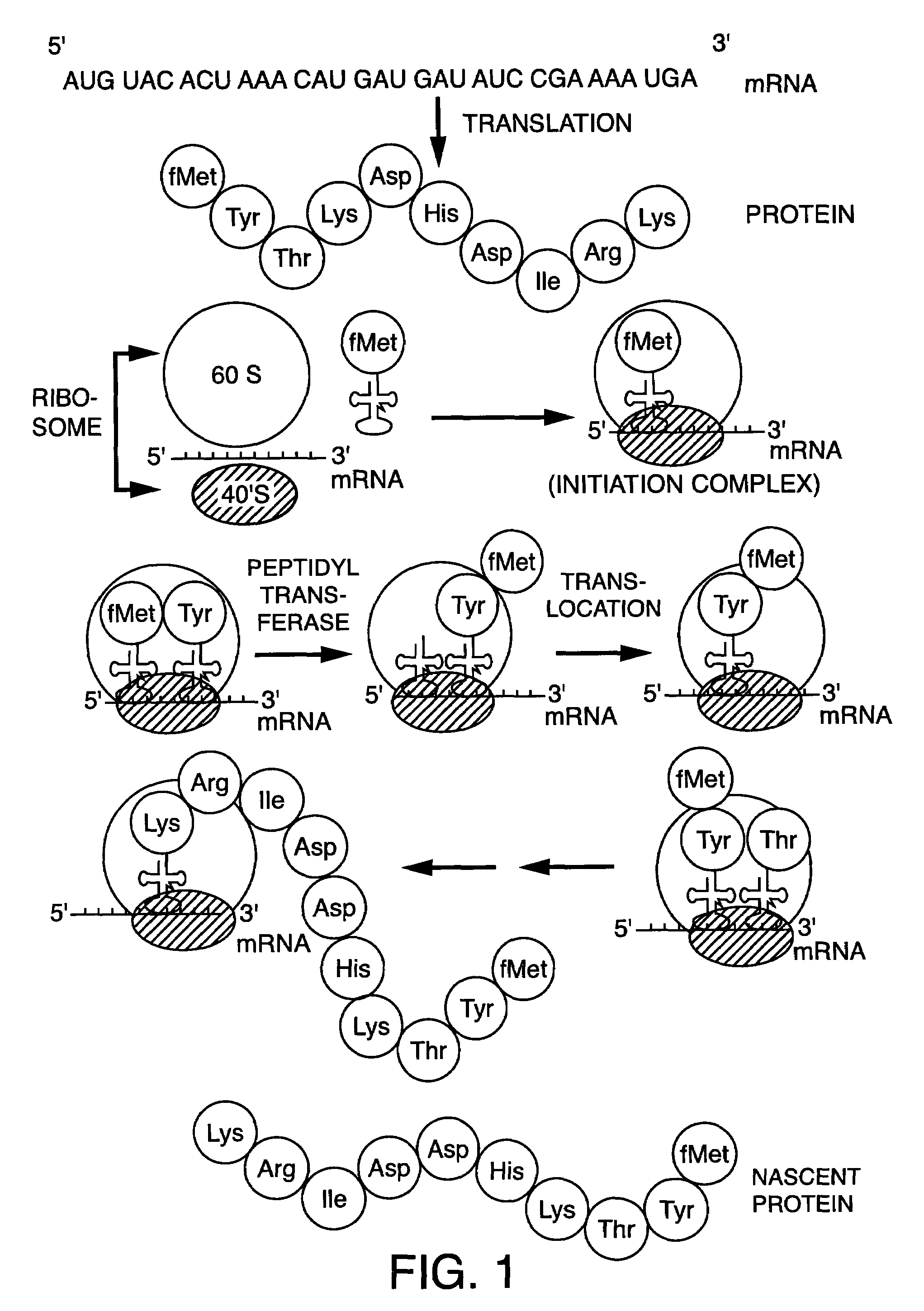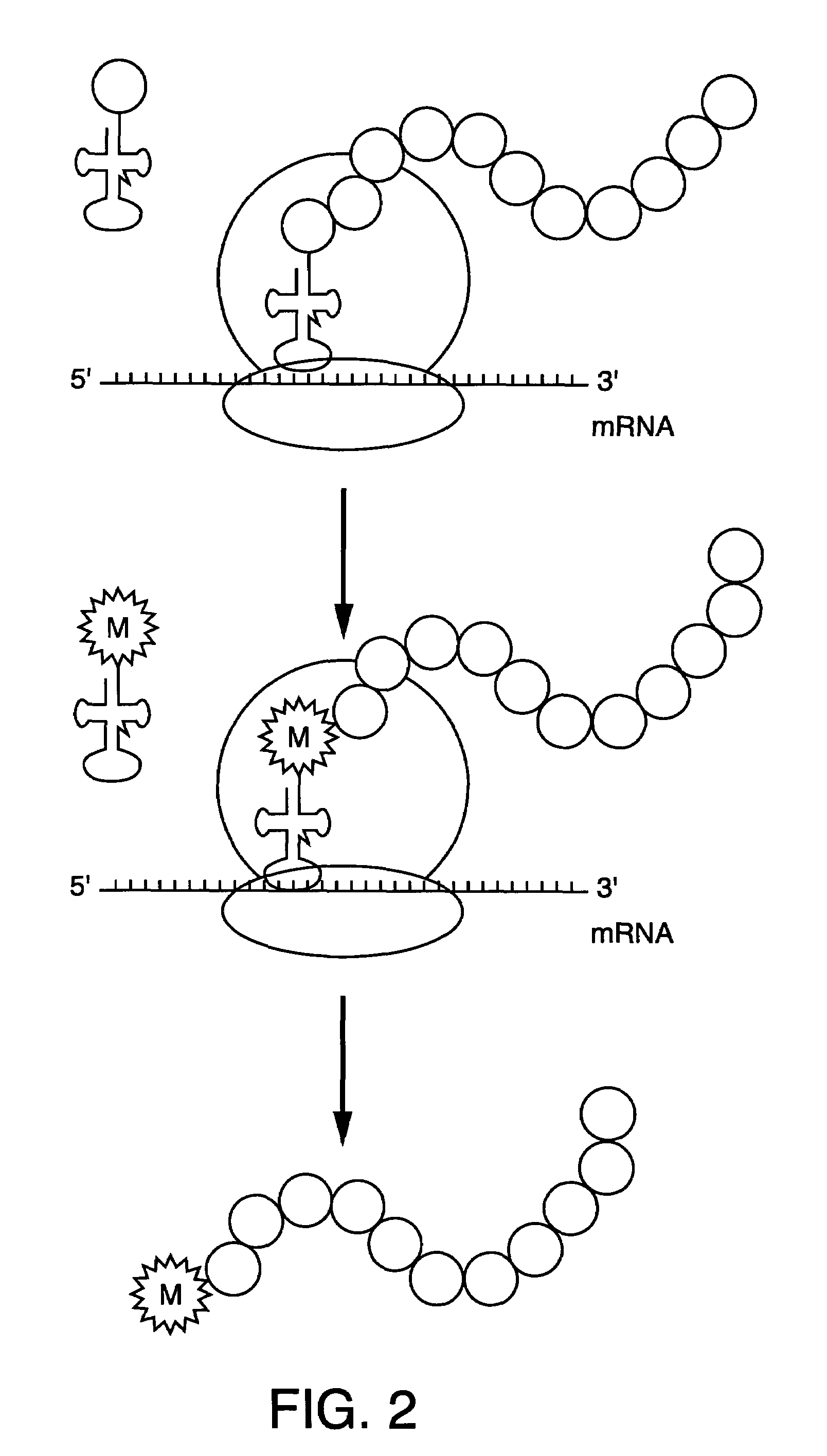Methods for the preparation of chemically misaminoacylated tRNA via protective groups
- Summary
- Abstract
- Description
- Claims
- Application Information
AI Technical Summary
Benefits of technology
Problems solved by technology
Method used
Image
Examples
example 1
[0200]In this example, a method for the preparation of 5-Methyl-1(2-Nitrophenyl)ethanol (FIG. 18, Compound 2) is provided. Briefly, 5-Methyl-2-nitroacetophenone (FIG. 18, Compound 1) (Olejnik et al., 1995, Proc. Nat.l Acad. Sci. USA, 92: 7590-4; Olejnik et al., 1998, Methods Enzymol., 291: 135-54) was dissolved in 5 ml of ethanol. To this solution, 5 mg of sodium borohydride was added in small portions until analytical thin layer chromatography (TLC) showed complete conversion to 5-Methyl-1(2-Nitrophenyl)ethanol. The reaction was terminated by addition of 5 ml acetone and acidified to pH 3.0 with 1 N HCl, followed by extraction with chloroform. The organic layer was dried and evaporated to give the target compound as yellowish oil. The resulting compound was used without any further purification.
example 2
[0201]In this example, a method for the preparation of 5-Methyl-1(2-Nitrophenyl)ethyloxy-succinimidyl carbonate (FIG. 18, Compound 3) is provided. Briefly, 5-Methyl-1(2-Nitrophenyl)ethanol (FIG. 18, Compound 2) (Npe-OH) (98 mg; 0.54 mmol) was dissolved in 2.5 ml of anhydrous acetonitrile. To this solution, 122 μl of triethylamine (0.81 mmol, 1.5 eq.) was added, followed by N,N′-disuccinimidyl carbonate (216 mg, 0.81 mmol, 1.5 eq.). The reaction mixture was stirred at room temperature until analytical TLC (98:1:1, chloroform:methanol: AcOH, v / v / v) showed quantitative conversion to active carbonate (Npe-ONHS) (FIG. 18, Compound 3). The resulting solution of active carbonate was used without purification.
example 3
[0202]In this example, a method for the preparation of Npe-Val-COOH (FIG. 18, Compound 4) is provided. Briefly, Valine (218 mg; 1.86 mmol) was suspended in 2 ml of water to which was added 260 μl of triethylamine. To this suspension, a solution containing 1.2 eq. of Compound 3 (see Example 2) in acetonitrile was added over 15 min. period, during which pH value of the mixture was adjusted to pH 8.0 if necessary by the addition of triethylamine. The mixture was stirred for 30 minutes and acidified by addition of 10 ml of 0.1 N HCl, followed by extraction with 3×20 ml AcOEt. Organic layers were combined, dried and evaporated to dryness. The crude product was dissolved in 20 ml chloroform and extracted with 4×30 ml of 0.1 N NaHCO3, the aqueous layer acidified and re-extracted by chloroform to give 320 mg of pure target Npe-Val (FIG. 18, Compound 4).
PUM
 Login to View More
Login to View More Abstract
Description
Claims
Application Information
 Login to View More
Login to View More - R&D
- Intellectual Property
- Life Sciences
- Materials
- Tech Scout
- Unparalleled Data Quality
- Higher Quality Content
- 60% Fewer Hallucinations
Browse by: Latest US Patents, China's latest patents, Technical Efficacy Thesaurus, Application Domain, Technology Topic, Popular Technical Reports.
© 2025 PatSnap. All rights reserved.Legal|Privacy policy|Modern Slavery Act Transparency Statement|Sitemap|About US| Contact US: help@patsnap.com



